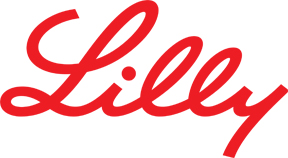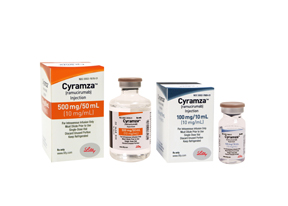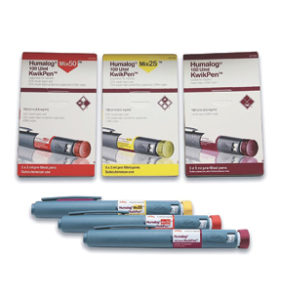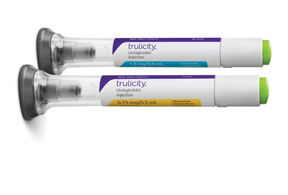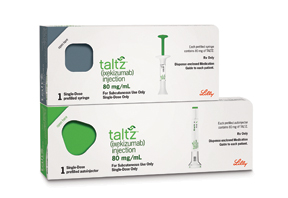Lilly: Has Spring Arrived?
The “YZ” years have been difficult for Lilly, but signs of new growth may be percolating below the surface.
Eli Lilly & Co.
Lilly Corporate Center
Indianapolis, IN 46285
Telephone: 317-276-2000
Website: lilly.com
Best-Selling Products
| Product | 2015 Sales | 2014 Sales |
|---|---|---|
| Humalog |
$2,842 |
$2,785 |
| Alimta |
$2,493 |
$2,792 |
| Cialis |
$2,311 |
$2,291 |
| Forteo |
$1,348 |
$1,322 |
| Humulin |
$1,307 |
$1,400 |
| Cymbalta |
$1,028 |
$1,615 |
| Zyprexa |
$940 |
$1,037 |
| Strattera |
$784 |
$739 |
| Effient |
$523 |
$522 |
All sales are in millions of dollars.
Financial Performance
| 2015 | 2014 | |
|---|---|---|
| Revenue |
$19,959 |
$19,616 |
| Net income |
$2,408 |
$2,391 |
| Diluted EPS |
$2.26 |
$2.23 |
| R&D expense |
$4,796 |
$4,734 |
| 1H16 | 1H15 | |
|---|---|---|
| Revenue |
$10,270 |
$9,623 |
| Net income |
$1,188 |
$1,130 |
| Diluted EPS |
$1.12 |
$1.06 |
| R&D expense |
$2,557 |
$2,209 |
In millions of dollars, except EPS
The new growth is just beginning to appear for Eli Lilly after a long and difficult winter. Not long ago the blockbusters Cymbalta and Zyprexa were generating more than $8 billion in annual sales between them. Then came loss of exclusivity – September 2011 for Zyprexa, December 2013 for Cymbalta – and the fallow period that company executives called “YZ.” Top-line revenue dropped in 2012, rose slightly in 2013, then fell below $20 billion in 2014, a line that had not been crossed since 2007. The numbers alone do not seem to suggest that 2015 was much better; revenue rose by less than 2 percent and still did not reach $20 billion. But underneath Lilly’s stagnating blockbuster product sales lie potential possibilities for the future. Cyramza and Trulicity, both approved in 2014, were on track to exceed $500 million in sales this year; the psoriasis product Taltz was just approved in March; pipeline compounds like baricitinib and olaratumab are showing promise; the Lilly/Boehringer diabetes partnership is brewing up new assets; and one of those developmental Alzheimer’s drugs might just work out. Whatever the future might hold for Lilly, it seems that the low point has been passed.
“Our company has been through some real challenges these past few years,” said outgoing CEO John C. Lechleiter, Ph.D., in his annual message for 2015. “But we confronted them head on, figured out a strategy to handle what we faced, and executed that strategy with grit and determination. We never wavered. And in 2015, we got sure signs that it’s working.”
Lilly’s top-line revenue for 2015 was $19.96 billion, an improvement of 1.7 percent compared with the previous year. Net income edged up 0.7 percent to $2.41 billion, and earnings per share rose 3 cents to $2.26. With all of the company’s major prescription products static or declining in sales, this was a more impressive achievement than it might appear at first glance; Lilly executives credited it to the additional revenue coming from the former Novartis Animal Health, acquired in January 2015. In the first half of 2016, top-line revenue was up 6.7 percent to $10.27 billion, with net income rising 5.1 percent to $1.19 billion and EPS up 6 cents to $1.12. Lilly executives are projecting full-year EPS for 2016 at between $2.68 and $2.78.
New CEO In 2017
In July, Lilly announced that John C. Lechleiter, Ph.D., chairman, president and CEO, will retire as president and CEO and from the company effective December 31, 2016. Lechleiter will continue on Lilly’s board of directors until May 31, 2017, serving as non-executive chairman, at which time he will leave the board. Lilly’s board of directors has unanimously elected David A. Ricks, currently senior VP and president, Lilly Bio-Medicines, to assume the role of president and chief executive officer and to join the board on January 1, 2017, and to become chairman of the board on June 1, 2017.
“As Lilly transitions from our recent challenging period of patent expirations to a new era of growth, it is the logical time for a transition in company leadership,” Dr. Lechleiter says. “Dave Ricks is a capable, decisive, and energetic leader who is very well prepared to succeed me as CEO. He brings to the role broad experience in Lilly’s commercial operations along with an appreciation and understanding of research and development. He previously led Lilly’s business operations in Canada, China, and the U.S. Since 2012, he has successfully guided Lilly’s largest business area, Lilly Bio-Medicines, through a period of profound change. He is well respected inside and outside the company, consistently builds exceptional teams, and sets high standards of performance. Dave is well suited to help Lilly capitalize on the opportunities before it, as well as to confront the inevitable challenges that lie ahead. He will provide outstanding leadership for our company in the coming years.”
Lechleiter has been the company’s CEO since April 1, 2008, and the chairman of its board of directors since January 1, 2009. He joined Lilly in 1979 as a senior organic chemist in process research and development. In the mid-1980s he served as director of pharmaceutical product development for the Lilly Research Centre Limited in England. He later held roles in project management, regulatory affairs, product development, and pharma operations. In 2005, he was named president and chief operating officer and joined the board of directors.
“Lilly has the right strategy,” Ricks says. “We’ve built a strong pipeline and have a promising portfolio of recently approved new medicines. Navigating major patent expirations in recent years, we’ve sharpened our focus and improved our vigilance and agility. Now, we must realize our growth potential in an increasingly challenging global marketplace. We must focus on delivering better and better medicines to the patients who need them, and in so doing, benefit our employees, communities, and shareholders alike.”
Ricks’ successor as president of Lilly Bio-Medicines will be announced at a later date.
Since January 2012, Ricks has served as president of Lilly Bio-Medicines, which encompasses the therapeutic areas of Alzheimer’s disease, urology, immunology, musculoskeletal disease, and pain, as well as the company’s global marketing function. Ricks serves on the board of the European Federation of Pharmaceutical Industries and Associations and has served as co-chair of the Trans-Atlantic Business Dialogue.
After joining Lilly in 1996 as a business development associate, Ricks held several management roles in U.S. marketing and sales before moving to Lilly Canada, where he served successively as director of pharmaceutical marketing, national sales director, and general manager. He was subsequently named president and general manager of Lilly China before becoming president of Lilly USA in 2009.
Ricks earned a bachelor’s degree in business from Purdue University and joined Lilly following completion of his MBA from Indiana University. He chairs the Board of Governors for the Riley Children’s Foundation and in 2015 chaired the United Way of Central Indiana’s annual campaign. Ricks also sits on the executive board of the Crossroads of America Council of Boy Scouts of America, and on the Advisory Board of the Purdue University Weldon School of Biomedical Engineering.
Product Performance
Sales of Humalog, Lilly’s injectable human insulin analog, were $2.84 billion in 2015, an improvement of 2 percent. According to Lilly executives, this was due to higher prices and volume in the United States, offset by unfavorable effects of foreign exchange from international sales. In the first half of 2016, Humalog sales were $1.31 billion, down 2.2 percent.
The oncology drug Alimta generated sales of $2.49 billion in 2015, down 10.7 percent from the previous year. This was due to decreased demand in the United States and unfavorable effects of foreign exchange internationally. In the first half of 2016, sales of Alimta dropped another 5.3 percent to $1.17 billion.
Cialis, Lilly’s erectile dysfunction product, brought in sales of $2.31 billion in 2015, up 0.9 percent over 2014. Sales of Cialis in the United States rose 21 percent due to higher prices, while sales outside the United States fell 16 percent due to the unfavorable impact of foreign exchange. In the first half of 2016, sales of Cialis rose 9.1 percent to $1.21 billion.
Sales of Forteo, for osteoporosis, barely moved in 2015, rising just 0.2 percent to $1.35 billion. Forteo’s story was similar to Cialis; up 14 percent in the United States due to higher prices but down 6 percent outside the United States due to the impact of foreign exchange rates. In the first half of 2016, Forteo sales totaled $686 million, an improvement of 10.5 percent.
Humulin, an injectable human insulin, generated sales of $1.31 billion for Lilly in 2015, down 6.6 percent compared with the previous year. Company leaders blamed this on the loss of a government contract in Brazil. In January, FDA approved Humulin R U-500 KwikPen (insulin human injection) 500 units/mL, a pre-filled device containing Humulin R U-500, a highly concentrated formulation of insulin. Humulin R U-500 is the only FDA-approved insulin that is five-times more concentrated than standard U-100 insulin. This insulin is used to treat high blood sugar in people with type 1 and type 2 diabetes who need more than 200 units of insulin per day. Previously, Humulin R U-500 was only available in a vial, administered with either a U-100 insulin syringe or a volumetric syringe that required conversion to respective syringe “unit markings” or volume markings. Although each U-500 KwikPen holds 1,500 units of insulin (the amount in five U-100 insulin pens), it is the same size as other KwikPens and dials in five-unit increments. The U-500 KwikPen has a unique aqua-colored pen body to clearly differentiate it from other insulin pens. In the first half of 2016, sales of Humulin rose 9 percent to $689 million.
There was some growth to be found in Lilly’s portfolio in 2015, bubbling below the $500 million level. The oncology product Cyramza, first approved by FDA in April 2014, brought in $384 million in sales in its first full calendar year on the market, and Trulicity, a GLP-1 agonist for type 2 diabetes, generated $249 million in its first full year after being approved in September 2014. Both products are continuing to grow in the current year, with Trulicity posting $345 million in sales for the 2016 first half and Cyramza bringing in $278 million.
Acquisitions & Collaborations
In January, Lilly announced an arrangement to partner with Roche Diagnostics on its ongoing development of a commercially scalable cerebrospinal fluid assay for amyloid-beta 1-42.
Together with tau tangles, the presence of amyloid in the brain is a key marker of Alzheimer’s disease, a condition with no cure that is estimated to impact more than 7.4 million Americans by 2025. Improving the ability of practicing clinicians to detect evidence of amyloid is an important step in being able to effectively manage the disease. Currently, healthcare providers can find evidence of amyloid in the living brain through two methods: a cerebrospinal fluid test and an amyloid brain positron emission tomography scan.
Under this non-exclusive agreement, Lilly is responsible for certain milestone payments upon successful completion of key development objectives. Roche is responsible for the development, registration, and commercialization of the new test.
“We are excited to partner with Roche Diagnostics on this important test,” says Phyllis Ferrell, VP of Lilly’s Alzheimer’s disease platform. “We share the same commitment to providing people with Alzheimer’s disease the best care possible, which includes detection as well as diagnosis and education.”
In July, Lilly and Boehringer Ingelheim announced a new collaboration on a Phase Ib study that will evaluate the safety and tolerability of abemaciclib (LY2835219), Lilly’s cyclin-dependent kinase 4 and CDK 6 inhibitor, in combination with BI 836845, Boehringer Ingelheim’s insulin-like growth factor (IGF)-1/IGF-2 ligand neutralizing antibody, in patients diagnosed with HR+, HER2- mBC. Based on the Phase Ib trial results, the collaboration has the potential to expand to Phase II trials in patients with HR+, HER2- mBC and other solid tumors. Enrollment is scheduled to begin in late 2016, and Boehringer Ingelheim will be the sponsor of the study program.
“We are pleased to join with Boehringer Ingelheim to study the potential of their molecule in combination with Lilly’s abemaciclib, for which we have an active Phase III development program underway,” says Richard Gaynor, M.D., senior VP, product development and medical affairs for Lilly Oncology. “For patients living with metastatic breast cancer, the limited treatment options available make this an important area of focus for our efforts to advance the most innovative treatments.”
Lilly’s abemaciclib is designed to block the growth of cancer cells by specifically inhibiting CDK 4 and CDK 6. In many cancers, uncontrolled cell growth arises from a loss of control in regulating the cell cycle due to increased signaling from CDK 4 and CDK 6. Boehringer Ingelheim’s BI 836845 is an IGF ligand-neutralizing antibody that binds to both IGF-1 and IGF-2 preventing activation of the respective receptor resulting in decreased growth-promoting signaling, which may decrease tumor growth. In a Phase Ib/II trial BI 836845 has shown promising preliminary efficacy and good clinical safety in combination with everolimus and exemestane in patients with HR+ mBC. The rationale for the collaboration is based upon the hypothesis that these two agents, in combination, could offer a more complete pathway interference and could potentially prolong cell cycle arrest. For HR+, HER2-mBC patients, this could translate to a reversal of resistance to hormone therapy.
Recent Approvals/In The Pipeline
In March, FDA approved Taltz (ixekizumab) injection 80 mg/mL for the treatment of moderate-to-severe plaque psoriasis in adult patients who are candidates for systemic therapy or phototherapy. Taltz is designed to specifically target IL-17A, a protein that plays a role in driving underlying inflammation in psoriasis.
The FDA approval of Taltz was based on findings from the largest Phase III trial program approved to date, including more than 3,800 patients with moderate-to-severe plaque psoriasis from 21 countries. This number includes patients who began the trial on Taltz or placebo, or active comparator (U.S.-approved etanercept). This clinical program included three double-blind, multicenter, Phase III studies – UNCOVER-1, UNCOVER-2 and UNCOVER-3 – which demonstrated the safety and efficacy of Taltz in patients with moderate-to-severe plaque psoriasis. All three studies evaluated the safety and efficacy of Taltz (80 milligrams every two weeks, following a 160-milligram starting dose) compared to placebo after 12 weeks. UNCOVER-2 and UNCOVER-3 included an additional comparator arm in which patients received U.S.-approved etanercept (50 milligrams twice a week) for 12 weeks. UNCOVER-1 and UNCOVER-2 also evaluated response rates with Taltz during the maintenance period through 60 weeks.
In these studies, the co-primary efficacy endpoints at 12 weeks were a 75 percent improvement in the composite Psoriasis Area Severity Index score and static Physician’s Global Assessment 0 or 1 and at least a 2-point improvement from baseline. PASI measures the extent and severity of psoriasis by assessing average redness, thickness, and scaliness of skin lesions (each graded on a zero to four scale), weighted by the body surface area of involved skin, while the sPGA is the physician’s assessment of severity of a patient’s psoriasis lesions overall at a specific point in time and is a required measure FDA uses to evaluate effectiveness.
In all three studies, at 12 weeks, 87 to 90 percent of patients treated with Taltz saw a significant improvement of their psoriasis plaques (PASI 75). In addition, 81 to 83 percent of patients treated with Taltz achieved sPGA 0 or 1. The majority of patients treated with Taltz, 68 to 71 percent, achieved virtually clear skin (PASI 90) and 35 to 42 percent of patients saw complete resolution of their psoriasis plaques (PASI 100, sPGA 0). Among those patients treated with placebo, 7 percent or fewer achieved PASI 75, 7 percent or fewer achieved sPGA 0 or 1, 3 percent or fewer achieved PASI 90 and 1 percent or fewer achieved PASI 100 and sPGA 0. Taltz was also statistically superior to U.S.-approved etanercept at all skin clearance levels, including PASI 75 and sPGA 0 or 1 at 12 weeks. In an integrated analysis of the U.S. sites in the two active comparator studies – UNCOVER-2 and UNCOVER-3 – the respective response rates for Taltz vs. U.S.-approved etanercept were 87 percent vs. 41 percent for PASI 75 and 73 percent vs. 27 percent for sPGA 0 or 1.
Also in March, Lilly announced a change to the primary endpoint for the EXPEDITION3 clinical trial, a Phase III study of solanezumab in people with mild Alzheimer’s dementia. The original study design included co-primary endpoints of cognition and function – measured by ADAS-Cog14 and ADCS-iADL, respectively. Emerging scientific evidence supports the idea that cognitive decline precedes and predicts functional decline in Alzheimer’s disease, particularly in earlier stages of the disease. Thus, Lilly decided to amend the EXPEDITION3 trial to include a single primary endpoint of cognition (ADAS-Cog14). Functional outcomes will be measured during the trial in the same manner as previously designed, using both the ADCS-iADL and the FAQ (Functional Assessment Questionnaire). These two functional outcomes will now be considered key secondary endpoints for the EXPEDITION3 study.
In April, Lilly and AstraZeneca announced that AMARANTH, a Phase II/III study of AZD3293, an oral beta secretase cleaving enzyme inhibitor currently in development as a potential treatment for early Alzheimer’s disease, will continue to Phase III of the Phase II/III seamless trial. The AMARANTH independent data monitoring committee recommended the study continue without modification after a scheduled interim safety analysis was conducted. The analysis was not designed to review efficacy.
“This is an important and meaningful step forward on the path to better understand the Alzheimer’s puzzle,” Ferrell says. “We’d like to thank the AMARANTH participants and the trial investigators for taking part in this important study, and thank our colleagues at AstraZeneca for their partnership.”
AZD3293 has been shown in Phase I studies to reduce levels of amyloid beta in the cerebro-spinal fluid of people with Alzheimer’s and healthy volunteers. The progression of Alzheimer’s disease is characterized by the accumulation of amyloid plaque in the brain. BACE is an enzyme associated with the development of amyloid beta. Inhibiting BACE is expected to prevent the formation of amyloid plaque and eventually slow the progression of the disease.
Under the terms of their partnership agreement, AstraZeneca has received a milestone payment from Lilly now that AZD3293 has moved into Phase III testing. Lilly and AstraZeneca have also announced the planned initiation of a new Phase III trial for AZD3293. The trial, named DAYBREAK, will study the safety and efficacy of AZD3293 in people with mild Alzheimer’s dementia. DAYBREAK was scheduled to begin enrolling participants in the third quarter of 2016. FDA granted AZD3293 Fast Track status during August.
Additionally during April, Lilly and Boehringer Ingelheim announced plans to conduct two outcome trials investigating the diabetes medicine Jardiance (empagliflozin) for the treatment of people with chronic heart failure. The clinical trials were targeted to begin within 12 months and are planned to enroll people with chronic heart failure both with and without type 2 diabetes.
Jardiance was the first diabetes treatment to demonstrate a reduction in the risk of cardiovascular death in a dedicated CV outcomes trial. This was demonstrated on top of standard of care (including glucose-lowering agents and CV drugs) in people with T2D at high risk of CV events. In addition to reducing CV death by 38 percent, the EMPA-REG OUTCOME trial also showed that Jardiance reduced the risk of hospitalization for heart failure in people with T2D at high risk of CV events. These results led to the planned trials.
In May, FDA approved Jentadueto XR (linagliptin and metformin hydrochloride extended release) tablets for the treatment of type 2 diabetes in adults. Jentadueto XR, which is marketed by Boehringer Ingelheim and Lilly, is the seventh new treatment from the Boehringer Ingelheim-Lilly Diabetes alliance to be approved by FDA in the last five years.
Jentadueto XR combines 2.5 mg or 5 milligrams of linagliptin with 1,000 milligrams of metformin. Linagliptin, a dipeptidyl peptidase-4 inhibitor, works by increasing hormones that stimulate the pancreas to produce more insulin and the liver to produce less glucose. Metformin, a commonly prescribed initial treatment for T2D, lowers glucose production by the liver and its absorption in the intestine.
In June, Lilly and Incyte Corp. announced that in two Phase III trials patients with rheumatoid arthritis treated with baricitinib reported significant improvements in quality of life symptoms and other patient-reported outcomes compared to methotrexate or Humira. Patients with RA also reported improvement in productivity at work. In these studies, significant improvements in patient-reported measures, including pain, physical function, tiredness, and morning joint stiffness, were observed as early as one week after initial treatment with baricitinib. An NDA for baricitinib was submitted to FDA in January.
In the Phase III RA-BEGIN trial, at 24 weeks, 81 percent of patients receiving baricitinib monotherapy and 79 percent of patients receiving baricitinib plus methotrexate had clinically meaningful improvement in physical function compared with 70 percent among those receiving methotrexate alone. Clinically meaningful improvement was defined as an improvement in Health Assessment Questionnaire-Disability Index score of ≥0.22.
At 52 weeks, 68 percent of patients on baricitinib monotherapy and 72 percent of patients on baricitinib in combination with methotrexate saw clinically meaningful improvements in physical function compared to 57 percent of those treated with methotrexate alone.
At 24 and 52 weeks, baricitinib (as monotherapy or in combination with methotrexate) was also associated with significant improvement in pain, and clinically meaningful improvement in fatigue and the physical health components of the quality of life assessment compared with methotrexate alone.
In the Phase III RA-BEAM trial, where all patients received background methotrexate therapy, at 12 weeks, 75 percent of patients treated with baricitinib reported clinically meaningful improvement in physical function compared with 71 percent of patients on Humira. Clinically meaningful improvement was defined as an improvement in HAQ-DI score of ≥0.22.
At 24 weeks, 73 percent of patients treated with baricitinib reported clinically meaningful improvement in physical function compared with 64 percent of patients on Humira. At 52 weeks, 68 percent of patients treated with baricitinib reported clinically meaningful improvement in physical function compared with 58 percent of patients on Humira. At 52 weeks, baricitinib was also associated with significant improvement in pain, and clinically meaningful improvement in fatigue and the physical health components of quality of life compared with Humira.
“Our extensive Phase III clinical trial program demonstrates that baricitinib could, if approved, offer a potentially significant improvement in the treatment of rheumatoid arthritis,” says Terence Rooney, M.D., medical director, rheumatoid arthritis, Lilly Bio-Medicines. “In these studies, baricitinib demonstrated superiority on a variety of efficacy measures compared to the leading biologic, Humira, as well as the current oral standard of care, methotrexate. Additionally, patients reported their personal experience with baricitinib, further highlighting its positive impact on patients’ daily lives and activities.”
Also in June, Lilly announced results from the MONARCH 1 Phase II study of the cyclin-dependent kinase 4 and CDK 6 inhibitor abemaciclib in patients with hormone-receptor-positive (HR+), human epidermal growth factor receptor 2-negative (HER2-) metastatic breast cancer. The data showed that single-agent activity was observed in metastatic breast cancer patients, for whom endocrine therapy was no longer a suitable treatment option. The MONARCH 1 results confirmed objective response, durability of response, clinical benefit rate, and progression-free survival.
The single-arm study, designed to evaluate the safety and efficacy of abemaciclib monotherapy, enrolled 132 patients who were given 200 milligrams of abemaciclib orally every 12 hours until disease progression. Patients enrolled in the study were heavily pretreated, having experienced progressive disease on or after prior endocrine therapy, and had received prior chemotherapy with one or two chemotherapy regimens for metastatic disease. The primary objective of the trial was investigator-assessed ORR, with secondary endpoints of DoR, CBR, and PFS.
At the final analysis of response (minimum of 12 months follow-up), patients treated with abemaciclib achieved an ORR of 19.7 percent, with a median time to response of 3.7 months and a median DoR of 8.6 months. The median PFS was six months with a CBR (defined as patients who achieved complete response, partial response, or stable disease for six months or longer) of 42.4 percent. Of the 13 patients who remained on treatment at the time of this analysis, nine were responders and four had stable disease.
“In this population of heavily pretreated patients with a particularly poor prognosis, abemaciclib has shown promising single agent activity and tolerability,” Dr. Gaynor says. “These data reinforce our belief in abemaciclib as a potential best-in-class CDK 4 and CDK 6 inhibitor and add to the growing body of evidence that sustained target inhibition can lead to improved patient outcomes.”
Also in June, Lilly announced publication of detailed results from a Phase II study evaluating the efficacy and safety of olaratumab in combination with doxorubicin chemotherapy in patients with advanced soft tissue sarcoma not amenable to curative treatment with radiotherapy or surgery. STS is a rare cancer for which patients have limited treatment options. The study met its primary endpoint of progression-free survival and showed a statistically significant improvement in overall survival, a key secondary endpoint. FDA granted Priority Review status to Lilly’s olaratumab BLA application in May.
Patients treated on the olaratumab and doxorubicin arm achieved 6.6 months of median PFS compared to 4.1 months on the placebo and doxorubicin arm. The investigator-assessed PFS was confirmed by independent review with a median PFS of 8.2 months versus 4.4 months. OS was statistically significant, with patients treated on the olaratumab and doxorubicin arm having achieved a median OS of 26.5 months compared to 14.7 months with doxorubicin. The ORR was 18.2 percent with olaratumab plus doxorubicin and 11.9 percent with doxorubicin.
“We are encouraged to see the positive progression-free survival results and the increase in overall survival, which is something we haven’t seen in combination or against doxorubicin in the advanced soft tissue sarcoma setting in decades,” says Robert Ilaria Jr., M.D., senior medical director for Lilly Oncology. “Advanced soft tissue sarcoma is a rare cancer that is notoriously difficult to treat, and patients desperately need new treatment options.”
In July, FDA approved an expanded indication for Synjardy (empagliflozin and metformin hydrochloride) tablets to include treatment-naïve adults with type 2 diabetes. Synjardy, from Boehringer Ingelheim and Lilly, is indicated as an adjunct to diet and exercise to improve glycemic control in adults with T2D when treatment with both empagliflozin and metformin is appropriate.
Synjardy is a combination of empagliflozin (Jardiance) and metformin – two medicines with complementary mechanisms of action – to help control blood glucose in adults with T2D. Empagliflozin, a sodium glucose co-transporter-2 inhibitor, removes excess glucose through the urine by blocking glucose reabsorption in the kidney. Metformin, a commonly prescribed initial treatment for T2D, lowers glucose production by the liver and its absorption in the intestine.
The Synjardy label was updated to include results from a Phase III, double-blind, randomized, active-controlled study that evaluated the efficacy and safety of empagliflozin in combination with metformin as initial therapy compared with the individual components. In the study, at 24 weeks, the combination of empagliflozin 10 milligrams or 25 milligrams with metformin 1,000 milligrams or 2,000 milligrams resulted in significant reductions in A1C compared with the corresponding dose of either component alone.
In August, Lilly announced that following a pre-planned interim analysis for MONARCH 2, an independent Data Monitoring Committee provided the recommendation to continue the study without modification as the interim efficacy criteria were not met. The MONARCH 2 Phase III trial compares abemaciclib plus fulvestrant versus placebo with fulvestrant in women with hormone-receptor-positive (HR+), human epidermal growth factor receptor 2-negative (HER2-) locally advanced or metastatic breast cancer.
“We had stringent criteria set for this interim analysis and we look forward to receiving the final MONARCH 2 results in the first half of 2017,” Dr. Gaynor says. “We remain optimistic that treatment with abemaciclib, in combination with fulvestrant could offer improved outcomes for patients.”
The Phase III double-blind study, designed to evaluate the safety and efficacy of abemaciclib in combination with fulvestrant, was conducted across 142 sites worldwide. The intent-to-treat population of 669 patients was randomized to receive abemaciclib or placebo orally every 12 hours on a continuous dosing schedule, given in combination with fulvestrant at the approved dose and schedule, until disease progression. Patients enrolled in the study had experienced disease progression on or within 12 months of receiving endocrine treatment in the neoadjuvant or adjuvant setting or while receiving first-line endocrine therapy for metastatic disease. Patients who had received chemotherapy in the metastatic setting were not eligible for the study. The primary endpoint for MONARCH 2 is progression-free survival. The trial will continue into the first half of 2017 and will include a final analysis of PFS, overall survival and safety data.


